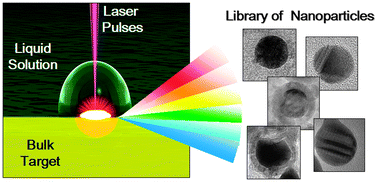What controls the composition and the structure of nanomaterials generated by laser ablation in liquid solution?†
Abstract

- This article is part of the themed collection: Laser Ablation and Nanoparticle Generation in Liquids
* Corresponding authors
a
Department of Chemical Sciences, University of Padova, Via Marzolo 1, I-35131 Padova, Italy
E-mail:
vincenzo.amendola@unipd.it

 Please wait while we load your content...
Something went wrong. Try again?
Please wait while we load your content...
Something went wrong. Try again?
V. Amendola and M. Meneghetti, Phys. Chem. Chem. Phys., 2013, 15, 3027 DOI: 10.1039/C2CP42895D
To request permission to reproduce material from this article, please go to the Copyright Clearance Center request page.
If you are an author contributing to an RSC publication, you do not need to request permission provided correct acknowledgement is given.
If you are the author of this article, you do not need to request permission to reproduce figures and diagrams provided correct acknowledgement is given. If you want to reproduce the whole article in a third-party publication (excluding your thesis/dissertation for which permission is not required) please go to the Copyright Clearance Center request page.
Read more about how to correctly acknowledge RSC content.
 Fetching data from CrossRef.
Fetching data from CrossRef.
This may take some time to load.
Loading related content
